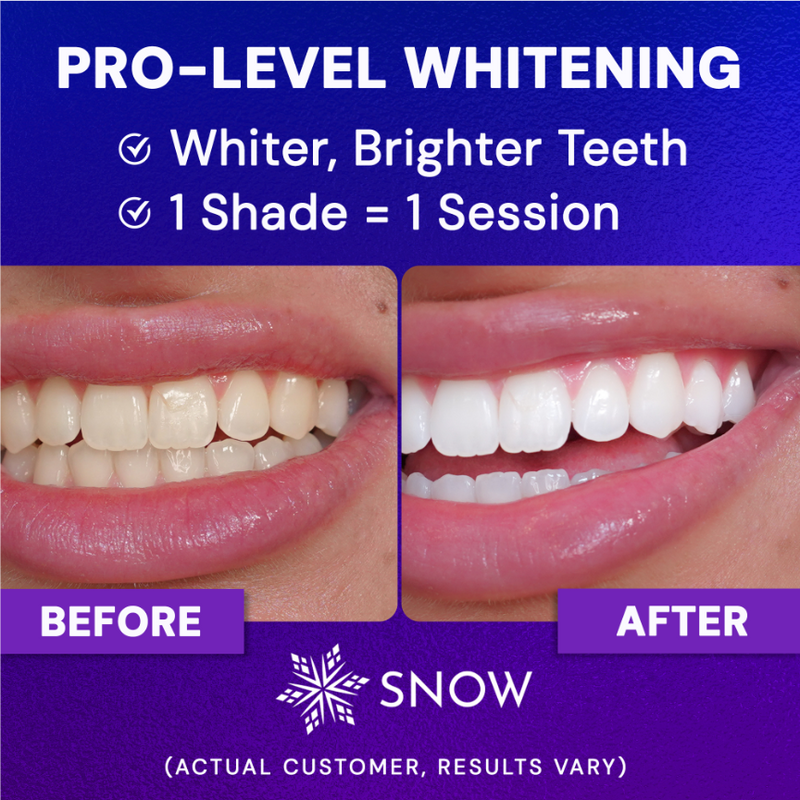
Today, we are going to learn more about mercury fillings, why they are dangerous, and why they are still used within the industry. We are also going to talk about safer alternatives and how to avoid potential exposure to mercury fillings. Let's get started.
What Is Mercury?
First off, let's talk about mercury. Mercury is a natural element that can be found in two forms: methylmercury or elemental mercury. Both forms are dangerous and are found in different areas around the globe, including your home.
Methylmercury has been combined with carbon. This form is found all around the environment, though it is invisible. You can find methylmercury in soil, water, and animals. It is also found commonly in household appliances, like latex paint or batteries.
Elemental mercury, on the other hand, has not reacted to any other substance yet. This form looks almost like a silver metal liquid. Whenever heated, elemental mercury evaporates into toxic vapors. Like methylmercury, you can find elemental mercury in your home, such as in thermometers or barometers. It is also used in silver fillings.
Why Is It Used In Fillings?
Silver fillings are used to fill decaying teeth. This helps to strengthen the teeth so that they do not have to be removed. Although these fillings are called “silver fillings,” only 32% of the filling uses silver. Once again, about 50% of the filling contains mercury. These fillings also include copper, tin, zinc, and other elements to add strength and durability.
All these elements are combined together, which then creates a hard material. This hard material is called an amalgam. This amalgam was invented in the 18th century, and it has been scrutinized ever since due to its link to mercury poisoning.
Despite the scrutiny, doctors and dentists still use amalgam that contains poisonous mercury in patients with tooth decay. The reason for this is that amalgam is cheaper, easier to use, and faster than other filling options, such as traditional gold.
In fact, amalgam fillings are so common that the American Dental Association still considers it to be safe, durable, and affordable. Other organizations, such as the International Academy of Oral Medicine and Toxicology, criticizes the ADA’s stance on amalgam fillings. Other countries have even banned or restricted amalgam fillings due to their toxicity.
Why Are Mercury Fillings Dangerous?

So far, we have talked about what mercury is and why it is used in fillings. Although we have said repeatedly that it is poisonous and toxic, we have not talked about what makes mercury fillings so dangerous.
Whenever you have a silver filling, a little bit of mercury is released and permeates your body every time you chew. It is estimated that between 2 and 20 micrograms are released a day. This is not a lot, but as we stated above, there are no safe amounts of mercury exposure.
Chewing gum especially poses a risk to people with silver fillings. That is because chewing gum often releases more mercury than other foods or drinks. Similarly, hot drinks increase your mouth’s temperature, which encourages mercury vapors to release into your mouth.
Side Effects
What exactly happens whenever mercury infiltrates your body? Unfortunately, the side effects are rather scary and dangerous to your health. The side effects can be as minor as headaches, but they can be as major as kidney or respiratory failure. Headaches, insomnia, kidney problems, nerve damage, respiratory failure, and tremors are the most common side effects of mercury poisoning.
Some studies have even suggested that low levels of mercury exposure, such as that from dental tooth fillings, can potentially lead to long-term brain damage.
Pregnant women especially must be careful with mercury fillings. Not only will the mercury exposure harm themselves, but it will expose the unborn fetus, creating a lasting impact on the child's health once it is born. Symptoms of mercury poisoning in children include:
- Difficulty learning how to speak and understand language
- Impaired motor skills (like hand-eye coordination)
- Problems problem-solving or thinking
- Unaware of their surroundings
Early signs of mercury poisoning in adults include:
- Anxiety or nervousness
- Depression
- Irritability and mood changes
- Memory problems
- Numbness
- Physical tremors
As mercury levels rise, the symptoms will become more severe. Here are signs of more extreme mercury poisoning:
- Difficulty breathing
- Difficulty standing straight or walking
- Feeling uncoordinated
- Inability to feel face, hands, or other parts of the body
- Lack of motor skills
- Metallic taste in mouth
- Muscle weakness
- Nausea and/or vomiting
- Vision, hearing, or speech changes
Long term exposure to mercury can lead to the following:
- Increased cardiovascular risk
- Neurological damage
- Reproductive damage
What To Do If You Have Silver Fillings
If you have some silver fillings, the best thing to do is to remove them as soon as you can. Mercury is toxic and does not belong in your mouth. Even though removing the silver fillings may be costly or difficult, it is worth it since mercury exposure is more dangerous. After removing silver fillings, you should replace it with a non-toxic material.
Safer Alternatives
Today, silver fillings are used widely throughout the world, especially in the United States. This is incredibly dangerous and puts people at risk. If you need to replace your amalgam fillings with something more natural, you may need to talk with your dentist, potentially opting for a different dentist if yours does not offer a mercury-free option.
One of the safer alternatives is composite fillings. Composite fillings are non-toxic and include natural coloring, which allows the filling to match the color of your teeth. Most dental insurance plans cover composite fillings because it is strong, dependable, and proven effective.
Prevention Is Key

As we mentioned above, silver fillings, or any fillings for that matter, are used whenever teeth have become permanently damaged. Tooth decay or cavities cause weakness in your teeth that can spread over time, making it difficult to eat or enjoy life.
One of the easiest ways to avoid amalgam fillings is to avoid fillings altogether. You can do this by preventing tooth decay and cavities from forming on your teeth. If you do this, you will not need fillings of any kind.
Improper cleaning, drinking or eating sugary snacks, and mouth bacteria are common causes of tooth decay. Knowing how to manage these causes can help prevent tooth decay and remove the need to get fillings in the first place.
Brush Your Teeth After Eating And Drinking
It is common knowledge that you should brush your teeth twice a day, once in the morning and once at night. This is a good starting rule for dental hygiene, but it is more effective to brush your teeth after every meal. Brushing your teeth after every meal will ensure that sugars and bacteria do not eat away at your tooth enamel.
Ideally, select a toothpaste that contains fluoride. Fluoride will help protect your teeth, keeping them strong and healthy. Additionally, use a dental floss or some other interdental cleaner to clean between your teeth. Although you can't see this area, you can get cavities between them as well.
Use A Mouth Rinse
If you are at high risk of cavities, you might want to use a mouth rinse as well. You may be at risk if you are younger or older in age, have a dry mouth, experience heartburn, frequently snack, or have an eating disorder. Select a mouth rinse that has fluoride for additional protection.
Get Dental Sealants
Dental sealants place a protective coating around the chewing surface of your teeth. This protects tooth enamel from gaining plaque and acid. Dental sealants are recommended for young children, but they are definitely beneficial for adults as well.
Next time you go to your dental office, talk to your dentist about dental sealants. These sealants can last for multiple years, but they will need to be checked. Your dentist will give you tips for maintaining and elongating the lifespan of your dental sealants.
Eat Tooth-Healthy Food
Eat foods that are healthy for your teeth as well. Fresh fruits and vegetables increase saliva flow, which can prevent tooth decay. Also, opt for unsweetened or sugar-free options when you can. Changing your diet can make a huge impact on your oral health.
In contrast, avoid sticky foods that can get stuck between your teeth or in the pits of the chewing surface. Similarly, avoid sugary or sweet treats. If you eat foods that are unhealthy for your teeth, immediately brush after eating them.
Visit Your Dentist Twice A Year
Finally, the last tip for preventing tooth decay is to visit your dentist twice a year. Visiting your dentist will ensure that you are using the proper products and taking care of your oral health as you should. Many adults put off their dental visits. Be sure to make it a priority for your own health and well-being.
Can Whitening Treatments Prevent Tooth Decay?

One question that people ask a lot is if teeth whitening will help to prevent tooth decay. It is a fair question, but it is one that requires a thorough response.
Sort Of…
Generally speaking, the teeth whitening procedures will not prevent tooth decay. Teeth whitening procedures simply work to remove surface stains from your teeth. In other words, they do not remove plaque or other causes of tooth decay and cavities.
However, teeth whitening procedures require you to brush your teeth thoroughly beforehand. As a result, people who care about the whiteness and appearance of their teeth are less likely to experience tooth decay. So, taking the time to whiten your teeth can impact your general oral health, preventing against cavities in the future.
…But Be Careful
It is important to know that you should be careful when whitening your teeth while experiencing tooth decay. Many people experience tooth sensitivity when whitening their teeth. That is because the ingredients can seep into the tooth root and negatively impact the nerves. This is especially likely to happen if you have untreated cavities.
With this in mind, you need to be careful when whitening your teeth if you know you have cavities and tooth decay that have been untreated. Using whitening treatments on untreated tooth decay can be really painful and not worth the experience.
Use Whitening Options For Sensitive Teeth
Today, there are tons of teeth whitening options that are specifically formulated for sensitive teeth. These products will help whiten your teeth in a way that is gentle but still effective. This is a great option if you experience tooth sensitivity during whitening treatments.
Whitening toothpaste may be a great option for sensitive teeth because the toothpaste does not set on your teeth for an extended amount of time. As a result, whitening toothpaste is much less painful for people who experience tooth sensitivity.
LED whitening options are a great choice for sensitive teeth. I have sensitive teeth myself, and LED whitening treatments are the best option for me. They will help whiten your teeth without adding increased sensitivity or pain.
You can also talk to your dentist about other whitening options for sensitive teeth. They will give you recommendations based on their experience and knowledge of the industry.
Final Thoughts
Mercury exposure is nothing to joke about. Even trace amounts of exposure over time can lead to irreparable long-term damage. If you have silver fillings currently, talk to your dentist immediately about replacing them with a safer alternative. More so, ask for composite fillings next time you need to get a cavity filled.
In the meantime, vamp up your oral health routine to prevent tooth decay in the future. Preventing cavities from forming is the number one way to prevent mercury fillings in the first place. Not to mention, prevention will help your teeth remain healthy and strong, both now and well into the future.






































































